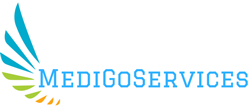
What’s in a generic name…?
The core issues are affordable access to medicines and their rational prescription and use
The Medical Council of India (MCI) issued a circular on April 21 drawing attention to clause 1.5 of its regulations regarding the professional conduct of doctors: “Every physician should prescribe drugs with generic names legibly and preferably in capital letters and he/she shall ensure that there is a rational prescription of drugs.” Further, the circular said, “For any doctor found violating clause 1.5 of Ethics Regulation, suitable disciplinary action would be taken by the concerned SMC/MCI.”
This has caused considerable unease among medical professionals. It appears that the MCI has responded to the statement by the Prime Minister on April 17 that the government intended to ensure that doctors prescribe medicines by generic names only.
Nearly all drugs have three types of names, the International Union of Pure and Applied Chemistry (IUPAC), the non-proprietary or generic, most commonly the International Non-proprietary Name (INN) administered by the World Health Organisation (WHO), and the brand name. Some countries, such as the U.S., Britain and Japan, have their own generic names or approved names.
Once patents have expired, companies other than the original manufacturer can produce and sell the drug. This usually results in significant reduction in costs. These off-patent drugs are called generics internationally. However, the term ‘generic’ has a different meaning in India’s pharma trade. Medicines marketed exclusively with INN names are called generics or generic medicine.
The WHO advocates generic prescribing as part of an overall strategy to ensure rational medical treatment and prescribing tailored to local conditions. In India, there are many barriers to rational prescribing. For example, there are a bewildering number of fixed-dose combinations (FDCs), the vast majority of which have no therapeutic justification. These FDCs account for about 45% of the market (about ₹45,000 crore). The British National Formulary lists very few FDCs whereas in India there are thousands.
Of the total domestic pharmaceutical formulations, a market of over ₹1 lakh crore, generic medicines, as understood by the pharma trade, account for not more than 10%, or ₹10,000 crore. Therefore, even if a doctor prescribes a drug by generic name, the patient will generally end up buying a branded product.
A misinformed debate
It simply shifts the focus of promotional activities to the pharmacists. It is well known that different companies offer different trade margins. There is the moral hazard that pharmacists will dispense the brand which offers them the biggest margin. The current diktat by the MCI therefore will not reduce prices for the consumer.
Some commentators argue that brand names ensure quality and many doctors believe this. This belief is ill-founded. The recent quality survey by the government found 26 of 32 samples from a particular plant of a prominent multinational drug company to be not of standard quality (NSQ). The most effective way to maintain quality is to have periodic testing and stringent disincentives for poor quality. The best insurance for good quality is good regulation.
Some argue that bioavailability and bioequivalence (BA and BE) of generics may not be equal to the original brand. Bioavailability refers to the rate and extent to which the active ingredient of the drug present becomes available at the site of action of the drug. In order for a new generic drug to be licensed, it has to be bioequivalent to the reference drug.
It means that BA of the generic drug is similar to that of the reference drug. Of the approximately 800 useful drugs known to modern medicine, bioequivalence is really only important for a few drugs with low solubility and high or low permeability, so the debate about BA and BE is somewhat misinformed.
The present pronouncements by government spokespersons on drug pricing, and concomitant actions by the MCI, appear to put the onus of all the problems in this sector on the medical profession whereas successive governments have taken very few initiatives to reduce drug costs and promote manufacture of only rational medicines. The current method of price control legitimises margins of up to 4000% over the cost of the product.
The core issues are affordable access to medicines and their rational prescription and use. These objectives require an enlarged list of essential and life-saving medicines under price control, elimination of all irrational FDCs, no brands for drugs off patent, and briefer officially approved names to make it easier for doctors to prescribe generics including the rational FDCs.
George Thomas is an orthopaedic surgeon at St. Isabel’s Hospital, Chennai. S. Srinivasan is with LOCOST, Vadodara, and the All India Drug Action Network
